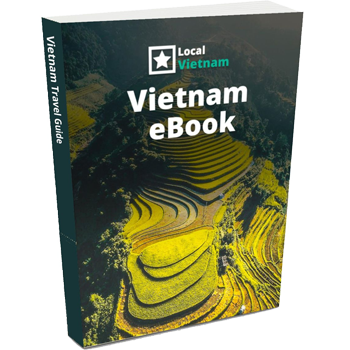What is Da Nang Fine Arts Museum about?
The Da Nang Fine Arts Museum focuses on Vietnamese visual art, especially from Da Nang and the surrounding central provinces. The collection includes everything from traditional lacquerware and wood carving to wartime paintings and modern art. The experience is calm, visual, and self-guided—there’s no interactivity or tech-driven features here, just quiet galleries where you can take your time and explore local creativity across different eras and styles.
Visiting information
Opening times
- Open daily: 8:00 AM – 5:00 PM
Entrance fee
- 20,000 VND per person
- No listed discounts for students or children
Location
- 78 Le Duan Street, Thach Thang Ward, Hai Chau District, Da Nang
- Located about 1 km from the Han River in the city center
- The area around the museum is fairly quiet, with not many other attractions nearby
How to get there
The museum is easy to reach by taxi or ride-hailing apps like Grab or Xanh SM. If you’re staying near the river or central area, it’s also walkable—around 10–15 minutes from Han Market or the Cham Sculpture Museum.
Audio guides or tours
There’s no official guided tour, but many artworks include QR codes that link to short audio explanations in English and Vietnamese. It’s a simple way to learn more about the artist and context as you explore each floor.
Highlights of the Da Nang Fine Arts Museum
The museum is spread over three floors, each with its own focus—from modern Vietnamese art to traditional crafts and ethnic heritage. It’s not huge, but there’s plenty to see, and the layout makes it easy to follow. These are the main highlights to check out:
1. Modern Art & Thematic Exhibitions (First Floor)
The ground floor hosts rotating exhibitions that often reflect current events, festivals, or themes in local life—like Tet or seasonal changes. It also includes a section for children’s art and an area for workshops or creative activities. This is usually the most dynamic part of the museum, so what’s on show may vary depending on when you visit.
2. Vietnamese Fine Art Across Mediums (Second Floor)
This floor features the museum’s main collection of modern and contemporary works. You’ll see paintings in oil, lacquer, and silk, along with woodcuts, sculptures, and graphic prints. Some works are themed around war and struggle, while others are more abstract or symbolic. It’s a mix of styles, but all rooted in Vietnam’s central region. If you enjoy seeing how local artists interpret history and culture, this is the strongest floor.
3. Folk Art and Ethnic Craft Traditions (Third Floor)
The top floor focuses on traditional art and crafts from Da Nang and the Central Highlands. Here you’ll find masks from classical Vietnamese theatre (Tuồng), carved wood statues used in temples and communal houses, jewelry, textiles, and folk religious items. It’s a quiet, detailed look at the handmade side of Vietnamese culture, with displays that reflect both everyday life and spiritual traditions.
Is it worth visiting?
The Da Nang Fine Arts Museum is a nice stop if you’re into local art, craft traditions, or just looking for a quiet cultural break from the beach and city noise. It’s especially suited for art lovers, students, creatives, or anyone curious about how Vietnamese artists reflect their history and identity through painting, sculpture, and traditional craft.
The museum is small enough to enjoy in 1 to 2 hours without feeling rushed, and the ticket price is very affordable. Don’t expect an interactive or modern museum—this is more of a calm, self-guided experience. There’s not much hands-on stuff, so it might not hold younger kids’ attention unless they’re into drawing or exploring art.
That said, it’s clean, well-organized, and has enough variety across its three floors to make it worth a visit if you’re nearby or already planning to explore Da Nang beyond the usual sights.
Pro Tip: Want to see how this museum compares to others in the city? Check out our full list of the best museums in Da Nang for more ideas—whether you’re into history, war relics, or something fun and interactive.


